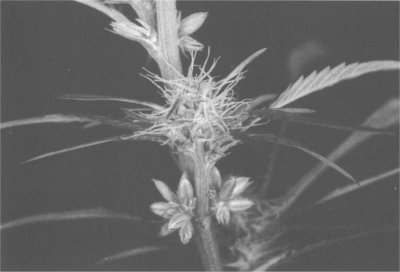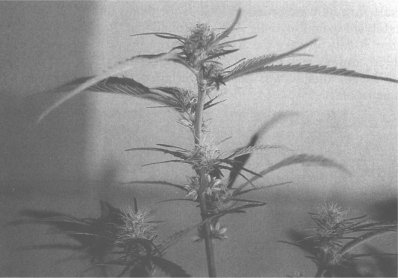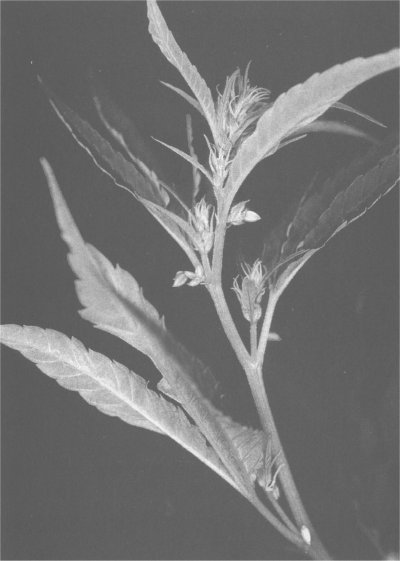I have often reported on the quest for these elusive ‘forced’ males. Readers have reported induction of male flowers on female plants by using aspirin and irregular light regimens during flowering. More growers reported failure trying these techniques, which were, at best, unreliable.
The application of gibberellic acid, a hormone found naturally in plants, has also been cited as a method of inducing male flowering. However, virtually all the growers I have interviewed have been disappointed by the results. They have reported stretched plants with running female flowers, but no males. However, induction of males using gibberellic acid has been reported in the scientific literature.



